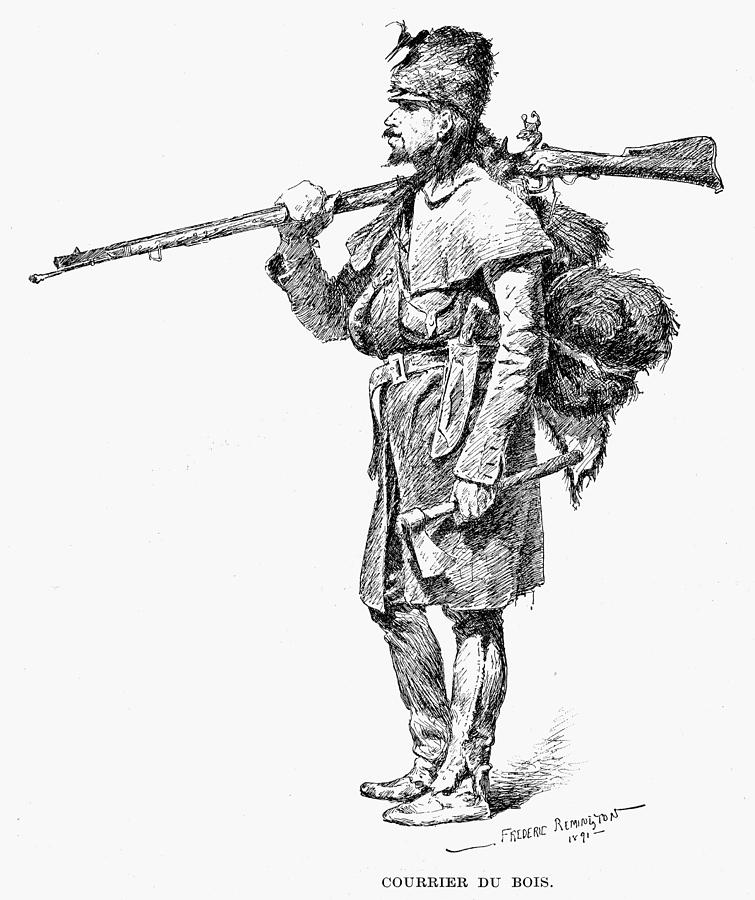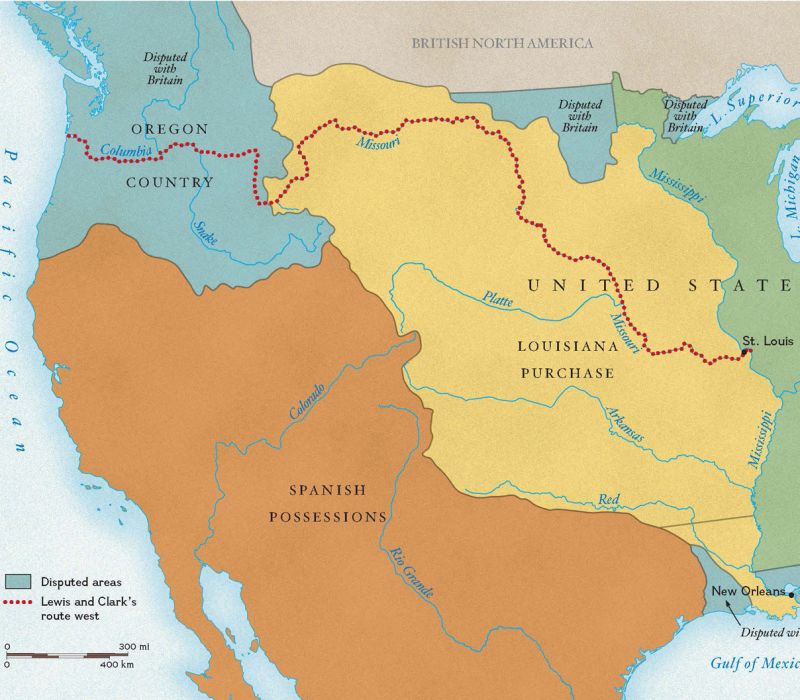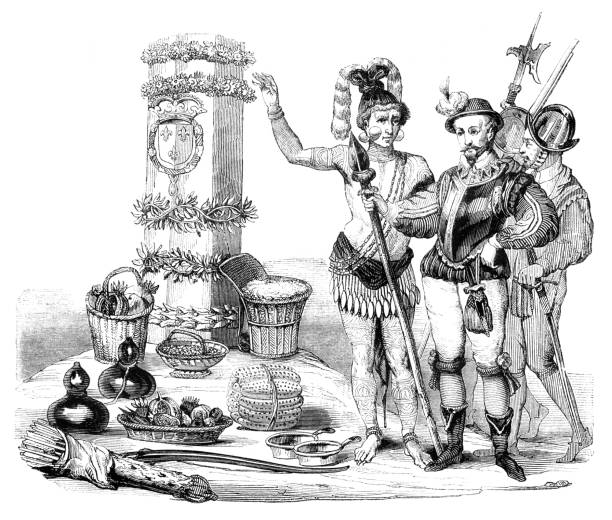- Home
- Social Studies
- French in America
French Explorers in America
Competing Empires
The vast territories of North America attracted the three most powerful European nations - Spain, England, and France - each seeking to extend its empire with new raw materials and new markets:
- Spain claimed most of the southern portions;
- England settled on the east Coast;
- France explorers in America led to their control in the north.

The French, unlike the English, did not stay and farm the land but were more interested in commerce from trading furs and in fishing. Being less inclined to settle, they explored more of the interior of the continent than any other group. Knowing that they needed partners, the French formed strong trading alliances with various Indian tribes that had important fur-trapping skills. Some French married Indian women and learned the habits and languages of the tribes. Their especially close ties to the Huron and Algonquin unwittingly brought them into conflict with the rival Iroquois with whom they had a long series of clashes.
Louisiana Territory
As the Iroquois became more powerful in the existing French fur-trading areas, the French explorers in America were driven to expand their territory. Perhaps influenced by this, in 1673 Jesuit priest Jacques Marquette and fur trader Louis Joliet paddled across Lake Michigan and then became the first Europeans to go down the Mississippi river.
 The French claimed the area in yellow. They eventually sold this region to the United States. Only in Canada did French influence endure - the eastern province of Quebec remains French speaking. The French claimed the area in yellow. They eventually sold this region to the United States. Only in Canada did French influence endure - the eastern province of Quebec remains French speaking. |
Following the expedition, the French laid claim to all of the lands west of the Mississippi. In 1681-82, explorer Sieur de la Salle was the first to travel the entire length of the Mississippi - ending up at present-day New Orleans - and he named the vast area surrounding it Louisiana, after his king, Louis XIV. By 1750, there were about 85,000 French inhabitants in New France, who, unlike the loosely governed English colonials, were under the strict control of their king.
French and Indian Wars

Tension between the French and the British over control of North America led to a series of wars called the French and Indian Wars - so named because Indians, who trusted the French more that the English settlers, fought prominently on the side of the French. Armed clashes began in 1754 when the French confronted militiamen from Virginia, including the young George Washington. With more that half of their forces made up of Indians, the French successfully fought off the British, who countered with more troops and supplies. The British ultimately proved the stronger and claimed victory.
Treaty of Paris
The French and British ended their North American fighting when they signed the 1763 Treaty of Paris. This treaty changed the future of the continent: it called for the French to cede all territory west of the Mississippi including the city of New Orleans to Spain, England's ally in the war, and all territory east of the Mississippi to Britain. Some years later, the French repurchased the Louisiana Territory from the Spanish, but sold it to the Americans in 1803. This ended their presence in the United States territory, although they continued to retain a stronghold in Canada.
|
Los vastos territorios de América del Norte atrajeron las tres naciones europeas más poderosas - España, Inglaterra y Francia - tratando cada una de extender su imperio mediante nuevas materias primas y nuevos mercados. España proclamó sus derechos sobre la mayor parte de las regiones del sur, Inglaterra colonizaba la costa este y Francia controlaba el norte. |
Okay, so now I've put on some ads from Amazon - from which I may earn a few cents. (2025)



